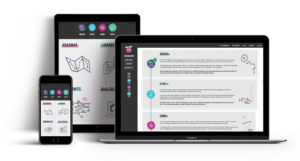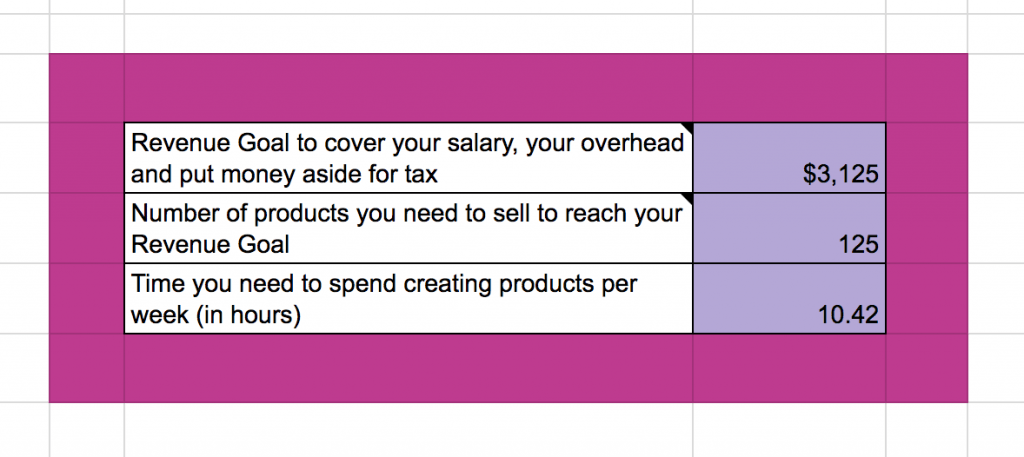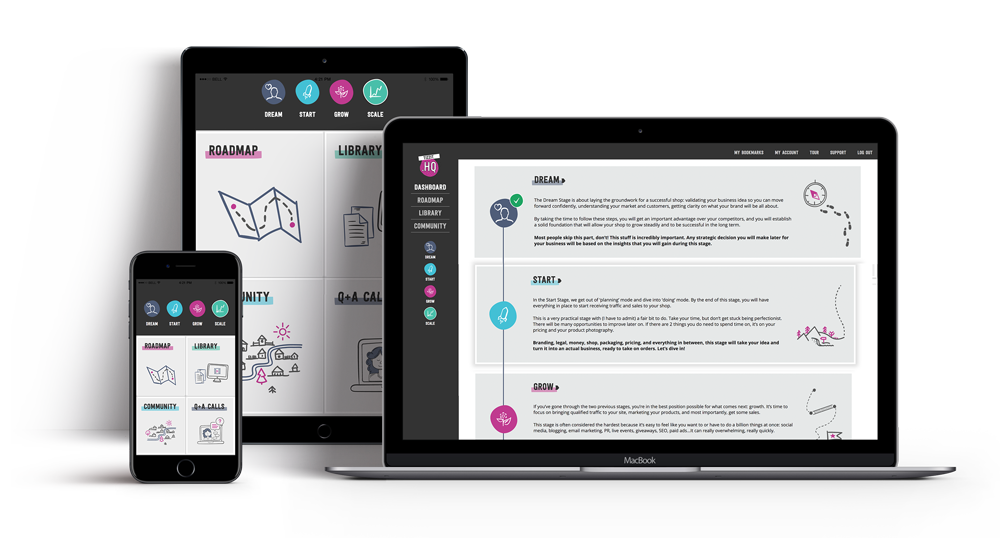from dream to handmade biz
Lesson 7 – money + profit plan
lesson outline
Paying yourself and breaking even
How many products do you need to sell?
Is it realistic/achievable?
A word of caution
lesson resources
lesson checklist
- I know how much money I need to make a month to break-even;
- I know how many sales I need to make each month to reach my minimum viable income and take my biz full-time;
- I made sure that my sales goal is achievable and realistic (both in terms of sales I need to make and of time I need to spend creating my products).
need more help?
check out tizzit hq

WHEN YOU BECOME A MEMBER, YOU GET ACCESS TO:
- The 4-stage Maker’s Roadmap system: an interactive, step-by-step guide to all the fundamental steps you need to take (and in what order!) to build a successful handmade shop
- 20+ in-depth courses and guest expert workshops (and more added monthly!)
Live Monthly Q&A Sessions - A friendly and supporting community of like-minded makers for you to connect with and get feedback from
- And so much more: accountability, quick wins videos and tutorials, workbooks and checklists, etc.
Paying yourself and breaking even
The first thing we want to figure out is how much money you need to make from your sales to pay yourself, pay your monthly fixed expenses, and put money aside for tax. In other words, to break even.
This is a situation where you do not save money or re invest money in your business but where you are making enough to cover your costs and pay yourself a minimum salary.
I could try to explain to you the maths behind it (it’s not hard at all!), but I’d rather make it easier for you, so I created a spreadsheet that will make sense of it all for you! Plug in your numbers and it will do the rest!
Here is the gist of it:
Imagine you sell a product for $30. The COGS for that product is $5 (that’s what it costs you to create it in material and supply).
You are making $30-$5=$25 every time you sell this product.
Let’s say that the minimum salary you want to pay yourself for a month (personal) is $2000 and your overhead (fixed business expenses) is $500.
On top of that you know you have to pay 20% in tax to your state/government.
To break-even (meaning you do not re-invest in your business or save money but have enough in revenue to pay yourself, cover your overhead, and put money aside for your tax) you would need to make a revenue of $3125.
20% of that amount will be set aside for tax. That’s $625.
$3125-$625=$2500 → Exactly what you need to pay yourself a $2000 salary and cover $500 of expenses.
→ You are breaking even.

To run your own numbers through that process and figure out how much you need to make a month to break even, head over to the Calculator spreadsheet. You will need to use the numbers (costs, pricing, minimum salary) that you calculated in Lesson 5 and 6. Other than that, it’s just plug and play!
How many products do you need to sell?
Using the same example as above: to make $3125 in revenue from that product, you would need to sell 125 products: 125 x $25 (your profit per product) = $3125.
You can see how many products you need to be making to break even in the calculator.
Is it realistic/achievable?
Finally, let’s get real: are these numbers achievable?
If we keep the above example:
If it takes you 20 minutes to create this product on average, you will need to spend 10.5 hours in your studio/creating products per week to be able to produce 125 units.
The question is: Does that sound realistic? It depends on your situation of course, and how many hours a week you can dedicate to creating (VS working on your marketing and sales).
It’s a good idea to play with different price points here (you could compare wholesale prices and retail prices for examples) to get an idea of the effect it has on your overall workload and sales goal.
Regarding your sales goals:
In the same example, with a wholesale price of $15 ($30/2), you would have to sell 312 pieces to break even. It might seems like a lot but you need to ask yourself: Is it easier for you to sell one product to 125 customers? Or to sell to 6 shops an order of around 50 products?
Regarding the impact on your workload:
In the example we have been using, if I was to sell my product for $22 and not $30, I would have to spend 5 extra hours in the studio, and I would have to sell 58 extra products to break even! A small change in price can have a big impact…
A word of caution
Disclaimer: This works to perfection in the case of a simplified one product business like we just did with our example. The reality is often more complex. Until you run your business for a couple of years and have a good idea of in what proportions you sell your products (eg.: You know that 20% of your sales are from product X, 40% from product Y, etc.) you won’t be able to accurately determine how many items will need to be sold in order to break even.
So, I would suggest that in the meantime you use an average of the numbers of items calculated of each product. Just be aware that if you sell more of item X than item Y, the number of items you need to sell to break-even will be closer to what you would calculate if you were only selling item X. The spreadsheet will give you a guide but, unless you sell only one product line, not a definitive answer.
